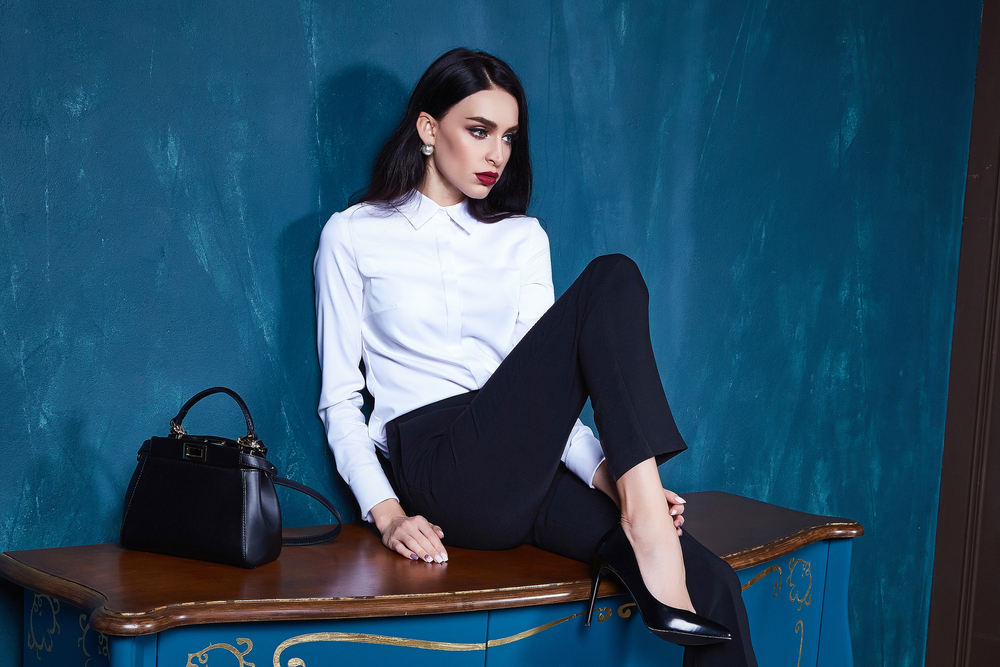
In the world of fashion and photography, modeling is an art form that requires grace, precision, and the ability to convey emotions through poses. Whether you are an aspiring model or someone who wants to improve their posing skills, understanding the art of modeling (by models) can help you master the perfect poses in photoshoots. In this article, we will explore the secrets to striking the right poses and creating stunning visuals.
1. The Importance of Body Awareness in ModelingEffective posing starts with body awareness. It is crucial for a model to know their body well - its strengths, weaknesses, and unique features. This knowledge will allow them to work with photographers to create poses that highlight their best qualities and create visually stunning images. Practice body awareness by standing in front of a mirror and exploring different postures and angles. This exercise will help you understand how your body looks from different perspectives and allow you to experiment with various poses.
2. Storytelling through Poses
modelling (or modeling) is not just about looking pretty in front of the camera; it is about telling a story. Each photoshoot presents an opportunity to convey a specific emotion or message. To master the art of posing, a model must understand the purpose of the shoot and the story that needs to be told. For example, if the shoot is for a summer fashion campaign, the poses should exude happiness, warmth, and relaxation. On the other hand, if the shoot is for a high-end couture brand, the poses should exude elegance, sophistication, and poise. Understanding the narrative allows models to embody the desired emotions and bring the vision to life through their poses.
3. The Power of Confidence in modeling (or modelling)
Confidence is the key to successful modeling . When striking a pose, a model must display confidence in their body language, facial expressions, and overall demeanor. Confidence allows a model to come across as strong, captivating, and compelling in photographs. However, building confidence as a model takes time and practice. Start by studying the work of successful models and practicing their poses in front of the mirror. Over time, you will develop your signature poses and feel more confident in front of the camera.
4. Embracing Natural Movements
One of the secrets to creating dynamic and authentic images lies in embracing natural movements. Fluidity and grace come from allowing your body to move in a way that feels natural to you. Models should avoid rigid and forced poses, as they can come across as unnatural and stiff in photographs. Instead, focus on incorporating subtle movements and gestures that add life and energy to the images. Experiment with different actions such as walking, twirling, or playing with your hair to achieve a more natural and effortless look.
5. Collaboration with Photographers
modelling is teamwork. Collaborating with photographers is essential for creating the perfect poses and capturing the intended vision. A great model understands the photographer's style, instructions, and preferences and adapts their poses accordingly. Effective communication is vital in this process. Ask questions, seek feedback, and be open to suggestions from the photographer. This collaboration will not only lead to better poses but also help forge a stronger professional relationship with the photographer.
Frequently Asked Questions:
Q1. How can I improve my modeling poses?A1. Improving modeling poses involves practicing body awareness, understanding the purpose of the shoot, embracing confidence, and studying the work of successful models.
Q2. What if I feel nervous in front of the camera?
A2. It's natural to feel nervous in the beginning, but practice and experience will boost your confidence. Work on building a strong rapport with the photographer to create a comfortable and supportive environment.
Q3. Are there any specific poses that work for everyone?
A3. There are no one-size-fits-all poses in modeling. Each individual has unique features and strengths. Experiment with different poses and angles to find what works best for you.
Q4. How do I know which emotions to convey in a photoshoot?
A4. Understanding the purpose of the shoot and the story that needs to be told will guide you in determining the emotions to convey. Discuss the concept with the photographer to align your poses with the desired narrative.
Q5. Can I incorporate my own ideas and poses into a shoot?
A5. Absolutely! Collaboration is key in modeling. While it is important to follow the photographer's directions, feel free to bring your own ideas and poses to the shoot. A unique perspective can bring freshness and creativity to the images.
Modeling is an art form that requires practice, dedication, and a deep understanding of one's body. By developing body awareness, storytelling skills, confidence, and a collaborative mindset, you can master the art of posing and create mesmerizing visuals in your photoshoots. Remember, modeling is not just about the poses; it's about telling a story through your body language and invoking emotions that captivate the audience. Embrace the art of modeling, and let your poses speak volumes!
Other useful resources
- https://en.wikipedia.org/wiki/Category:Modeling_(profession)
- https://en.wikipedia.org/wiki/Category:Models_by_modeling_agency